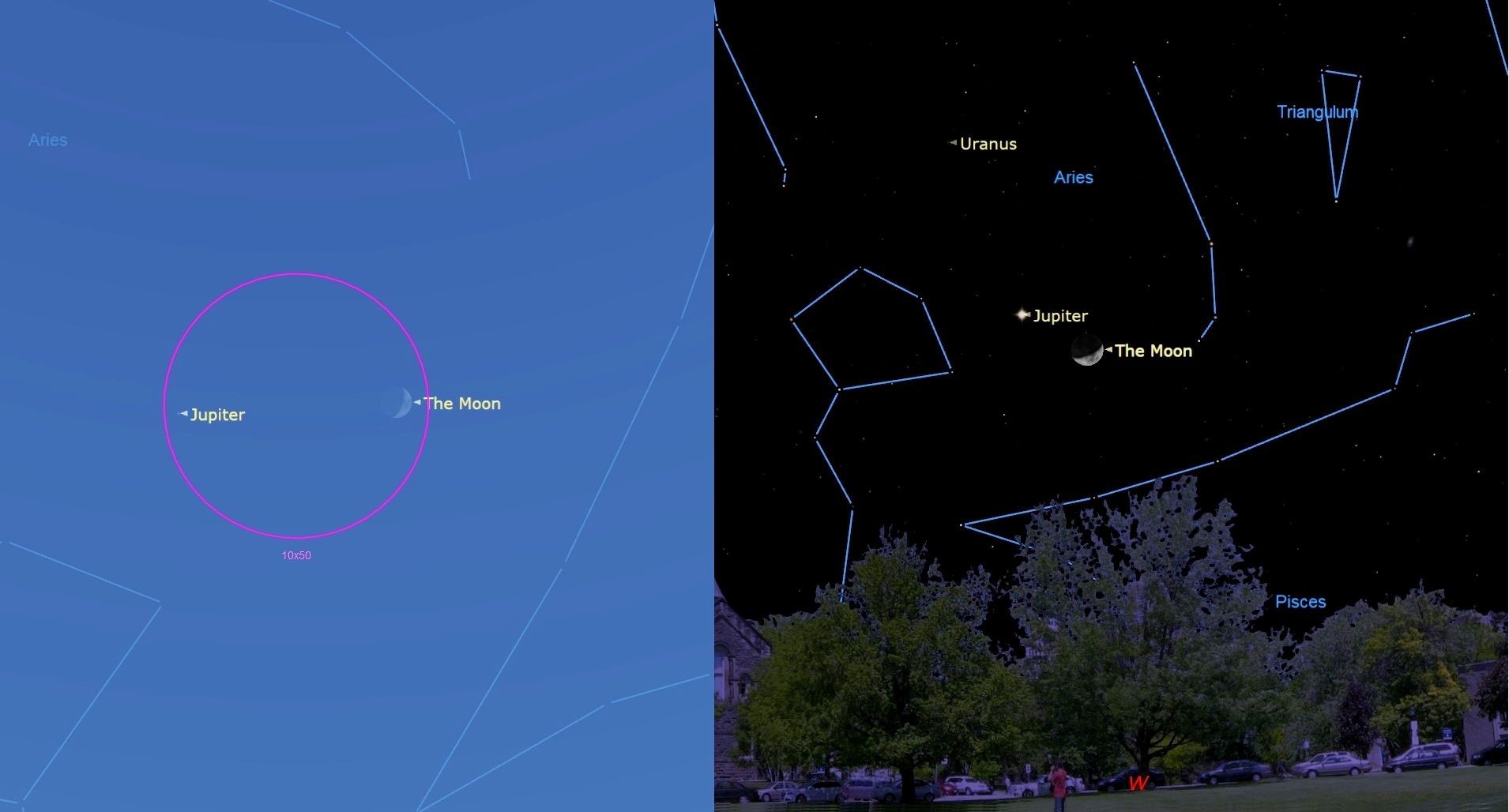
The moon and the Jupiter have a hot date for Valentine's Day tonight, strolling side-by-side through the night sky.
Starting when the pair rises above the horizon just before 11 a.m. EST (1600 GMT), the moon and Jupiter will be separated by less than 3 degrees from one another, equivalent to the width of a few fingers at arm's length. The moon will be a 5-day-old waxing crescent as it grows larger, approaching its first quarter phase on Feb. 16. Jupiter, meanwhile, will appear as a bright, pale yellow orb.
To see them, look high to the southwest as soon as the sun sets. The moon will be unmistakable, and Jupiter will be just above it and to the left, brighter than anything else in proximity to the moon. The duo will make their way across the sky together throughout the evening, finally setting in the west around midnight local time.
Related: Night sky, February 2024: What you can see tonight

Want to see craters on the moon up close, or the moons of Jupiter? We recommend the Celestron Astro Fi 102 as the top pick in our best beginner's telescope guide.
The pair will be in the Aries constellation, the Ram. Look to the right of the moon to find four stars making a roughly "hook" shape; those are the horns of the Ram.
While Jupiter and the moon will appear close in the night sky tonight, in truth, the two are separated by hundreds of millions of miles.
Earth and Jupiter are separated by an average distance of 444 million miles (714 million km), while the moon is an average of 238,855 miles (384,400 km) away from Earth. Thus, even when our natural satellite is in between Earth and Jupiter during its orbit around our planet, the distance between the moon and Jupiter changes only by a negligible amount.
If you'd like to take a close-up look at the moon or see the four Galilean moons of Jupiter, our guides to the best telescopes and best binoculars are a great place to start.
And whether you want to image the moon or to explore the night sky in general, check out our guide on how to photograph the moon or how to photograph the planets, as well as our recommendations for the best cameras for astrophotography and best lenses for astrophotography.
Editor's Note: If you get a great photo of the moon and Jupiter on their Valentine's Day date and would like to share it with Space.com’s readers, send your photo(s), comments, and your name and location to spacephotos@space.com.







